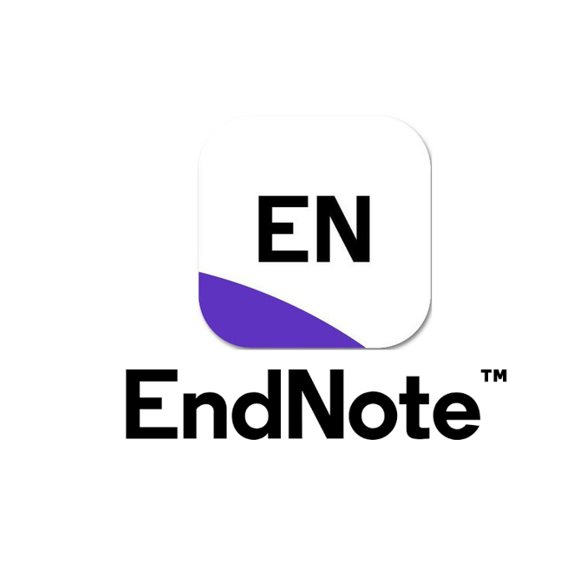
EndNote has long been a staple for researchers seeking to organize their citations and streamline the process of writing scholarly articles. As the demands of academia and industry continue to evolve in a data-rich, fast-paced digital environment, the need for robust, future-ready reference management tools has never been greater. In this review, we’ll explore why EndNote remains the go-to solution for researchers in 2025, highlighting its features, integrations, and innovative enhancements that position it at the forefront of reference management technology.
The Importance of Reference Management
In the world of research, the sheer volume of scholarly literature can be overwhelming. Managing references, tracking citations, and ensuring accurate formatting are crucial tasks that can consume precious time. Reference management software streamlines these tasks by allowing users to import, organize, and format citations automatically. As research becomes more collaborative and multidisciplinary, tools that can seamlessly handle large libraries of references while integrating with various writing and research platforms are essential for maintaining productivity and scholarly rigor.
A Brief History of EndNote
Developed by Thomson Reuters and now maintained by Clarivate Analytics, EndNote has been serving the academic community for decades. Over the years, it has evolved from a simple desktop citation manager to a sophisticated reference management system that offers extensive features and cloud-based capabilities. With its robust “Cite While You Write” (CWYW) plugin for Microsoft Word and other word processors, EndNote has become indispensable for researchers who need to insert citations and generate bibliographies with minimal hassle.
Key Features That Empower Researchers
1. Comprehensive Reference Library Management
EndNote enables researchers to build a centralized library of references from a wide variety of sources, including academic databases, online journals, and even manually entered data. Users can import references in multiple formats, ensuring that all the relevant information—such as authors, titles, publication dates, and DOIs—is captured accurately. The software’s advanced search capabilities allow researchers to quickly locate and retrieve references, making it easier to manage even extensive bibliographies.
2. Seamless Integration with Writing Tools
One of EndNote’s standout features is its integration with popular word processing software. The “Cite While You Write” functionality allows authors to insert citations directly into their manuscripts without having to switch between applications. This not only saves time but also reduces errors in citation formatting. Whether you are writing a grant proposal, a journal article, or a thesis, EndNote’s integration ensures that your citations conform to the required style guidelines—be it APA, MLA, Chicago, or any other format.
3. Cloud-Based Synchronization and Collaboration
In today’s research environment, collaboration is key. EndNote has embraced cloud technology, allowing users to synchronize their reference libraries across multiple devices. This means that whether you are in the lab, at your home office, or on the go, your references are always accessible and up-to-date. Cloud synchronization also facilitates collaboration among research teams, as libraries can be shared with colleagues, enabling seamless co-authoring and joint literature reviews.
4. Robust PDF Management and Annotation
EndNote is not limited to managing bibliographic data alone; it also excels at organizing and annotating full-text PDFs. Researchers can attach PDFs to their references, add notes, highlight key passages, and even search within the documents. This integration of literature and commentary transforms EndNote into a comprehensive research hub, where valuable insights are preserved alongside citation data.
5. Advanced Formatting and Output Options
Formatting bibliographies and reference lists can be a daunting task, especially when dealing with diverse citation styles across different journals. EndNote simplifies this process through customizable output styles. Users can easily switch between citation formats with just a few clicks, and the software automatically updates references in the document as changes are made. This dynamic formatting feature is particularly useful for researchers submitting manuscripts to multiple journals with varying requirements.
How EndNote Stays Ahead of the Curve
As research workflows evolve, so too must the tools that support them. EndNote’s commitment to continuous improvement and innovation is a key reason why it remains the tool of choice for researchers in 2025.
Embracing Artificial Intelligence and Machine Learning
One of the most exciting advancements in reference management is the integration of artificial intelligence (AI) and machine learning. EndNote has begun incorporating AI-driven features to help researchers identify relevant literature and detect citation errors automatically. For example, AI can now suggest related articles based on the content of your library, helping to uncover connections and emerging trends that might otherwise be overlooked. These smart features not only streamline the research process but also enhance the quality of scholarly work.
Enhanced Integration with Digital Research Ecosystems
EndNote’s evolution is closely tied to its ability to integrate with digital research ecosystems. In addition to seamless integration with Microsoft Word, EndNote now works well with other research platforms, including data repositories, academic databases, and even reference management tools used by collaborators worldwide. This interoperability means that researchers can pull in data from multiple sources, ensuring that their work is both comprehensive and current.
User-Centric Improvements and Customization
Understanding that researchers have diverse needs, EndNote continuously updates its user interface to be more intuitive and customizable. The latest versions offer improved search functionalities, streamlined workflows, and enhanced mobile support, ensuring that users can manage their references with ease regardless of their technical proficiency. Customization options allow researchers to tailor the software to fit their specific disciplines and preferences, making it a versatile tool across different fields of study.
Security and Data Integrity
In the digital age, protecting sensitive research data is paramount. EndNote employs robust security protocols to ensure that users’ libraries and attached documents are securely stored and transmitted. With regular updates and cloud backup options, researchers can be confident that their work is safeguarded against data loss or unauthorized access. This level of security is particularly critical for academic institutions and research organizations that handle confidential or proprietary information.
Comparative Advantages Over Competitors
While several reference management tools exist—such as Zotero, Mendeley, and RefWorks—EndNote distinguishes itself with a combination of extensive features, long-standing reliability, and strong integration with Clarivate’s suite of research products like Web of Science and Cortellis. Researchers who require deep integration with scholarly databases, robust collaboration features, and a highly customizable environment often find that EndNote meets their needs more comprehensively than its competitors.
For instance, while Zotero offers excellent web-based integration and is free, it may lack some of the advanced formatting and cloud synchronization capabilities that power users demand. Mendeley, another popular tool, provides collaboration features but has faced challenges with data privacy and long-term sustainability. EndNote, with its decades-long history, proven track record, and continued innovation, offers a mature solution that appeals to both novice and expert researchers.
The Future of Reference Management with EndNote
Looking ahead, the future of reference management is set to be shaped by increasing automation, greater integration, and enhanced collaborative capabilities. EndNote is well-positioned to lead this evolution by leveraging emerging technologies and responding to the changing needs of the research community.
Future enhancements may include deeper integration of AI to offer personalized literature recommendations, more sophisticated error-checking algorithms, and expanded compatibility with emerging research tools and platforms. As the volume of published research continues to grow exponentially, having a reference management tool that can intelligently filter and organize information will be critical. EndNote’s ongoing commitment to innovation suggests that it will continue to adapt, ensuring that researchers have the tools they need to thrive in a rapidly changing academic landscape.
Conclusion
EndNote stands out as a comprehensive and future-ready reference management solution for researchers in 2025. Its powerful combination of robust citation management, seamless integration with popular writing tools, cloud-based collaboration, and advanced PDF management positions it at the forefront of academic research tools. As the research environment becomes more dynamic and data-intensive, EndNote’s commitment to continuous improvement, security, and user-centric innovation ensures that it remains an indispensable tool for scholars worldwide.
By enabling researchers to manage their citations effortlessly, focus on their core research, and collaborate seamlessly with colleagues, EndNote not only saves time and reduces errors but also fosters a more productive and innovative research environment. Whether you’re a seasoned academic, an early-career researcher, or part of a collaborative team in an industry setting, EndNote offers the versatility and reliability needed to navigate today’s complex scholarly landscape and unlock new discoveries for tomorrow.
In a world where data-driven insights drive innovation, reference management is more than a convenience—it is a strategic asset. EndNote’s rich feature set, combined with its forward-looking enhancements, makes it the definitive tool for reference management. As research continues to expand and evolve, EndNote remains committed to empowering researchers with the technology they need to succeed, truly embodying the future of reference management.






